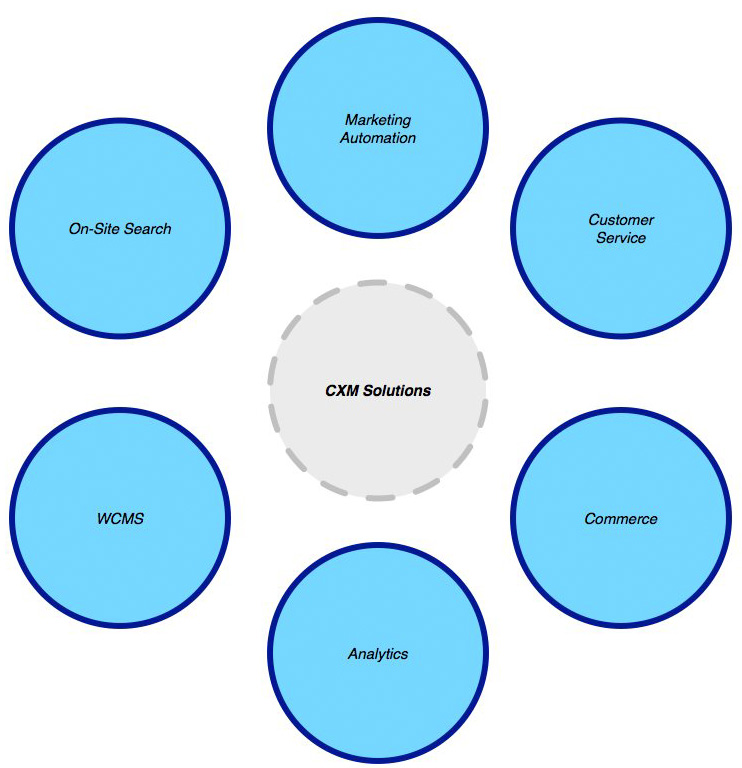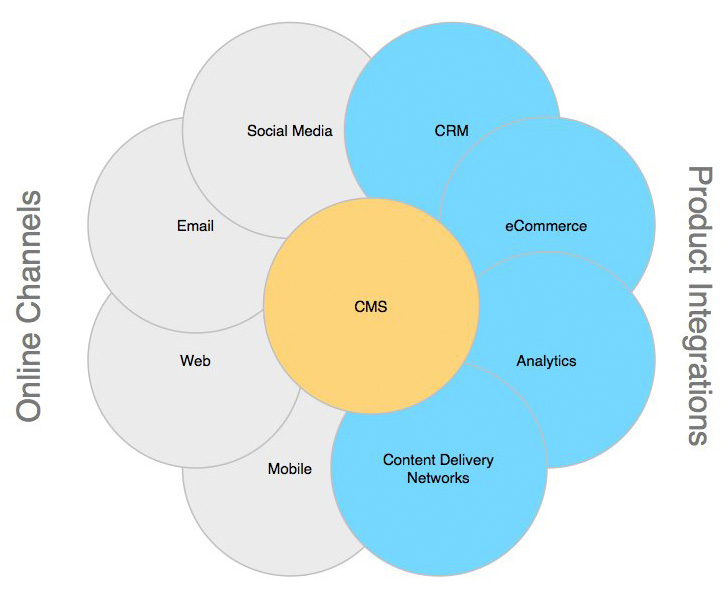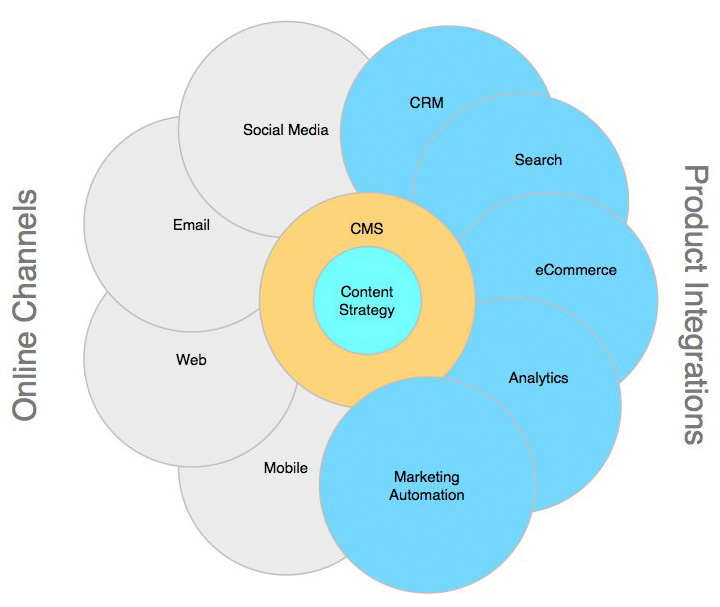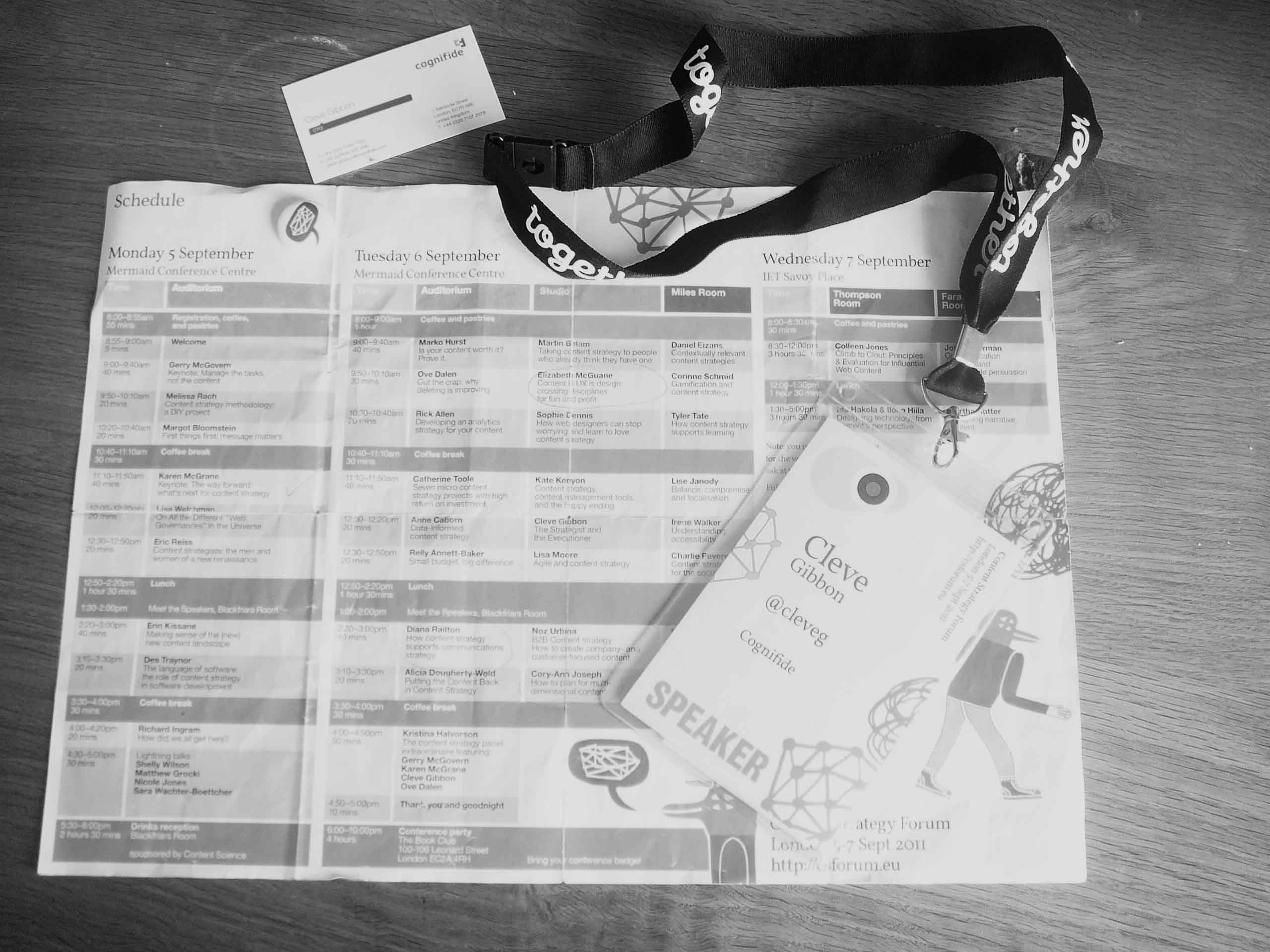A recently published Forrester Wave report on Web Content Management for Online Customer Experience evaluates the strengths and weaknesses of some of the leading WCM vendors, observing that:
- The WCM market is growing rapidly to accommodate Customer Experience Management needs (CXM).
- The most effective way to do this is for WCM to integrate with a large array of CXM technologies.
What is an Online CXM Solution?

A set of solutions that enable the management and delivery of dynamic, targeted, consistent content, offers, products, and services interactions across digitally enabled consumer touchpoints – Forrester Wave
WCM, Analytics and Commerce are converging. Marketing Automation, Search and Customer Service Management are the latest technologies making up the online CXM ecosystem. Forrester clearly positions WCM as a key technology that all the others within the CXM ecosystem need to better integrate with.
Earlier this year I gave a presentation on Building a Marketing Technology Platform to Engage with Global Brands at the Adobe Solutions Partner Conference in Barcelona. It too positioned content management at the centre of any progressive marketing technology platform.
 Why is the CMS in the middle? Well, people engage with companies through relevant and useful content. The CMS ties all this together. However, delivering enchanting online customer experiences still presents mind numbing content challenges. Mind numbing! Today, creating, managing and publishing up-to-date, engaging and relevant content is too much like hard work. Yet the key to customer loyalty is by making CXM seriously low effort. That makes CMS both front and centre in online CXM solutions.
Why is the CMS in the middle? Well, people engage with companies through relevant and useful content. The CMS ties all this together. However, delivering enchanting online customer experiences still presents mind numbing content challenges. Mind numbing! Today, creating, managing and publishing up-to-date, engaging and relevant content is too much like hard work. Yet the key to customer loyalty is by making CXM seriously low effort. That makes CMS both front and centre in online CXM solutions.
Strategy needs Execution (and vice-versa)
Tactics without strategy is the noise before defeat. – Sun Tzu
If you fast forward to the end of the presentation I had time for one question. It came from Ed Van Siclen, VP of Technology and Partner Solutions at Adobe, who asked the following about the CMS-In-The-Middle slide above:
What drops into the middle next?
Ed, six months on here’s my evolution of that slide:

Content Strategy is the glaring omission. Content strategy is required both to guide and course correct execution (and execution to validate the strategy). Whilst all these tectonic shifts are taking place within marketing technology and online CXM solutions, similar kinds and possible even more disruptive forces are at play within the content strategy community.
Aligning both content strategy and online CXM execution is like walking through treacle. Maddening difficult but align them we must. Content strategists are the ones with both hands in your client’s content. Shaping it. Adapting it. Managing it. Everyday. They are an ideal source of requirements (e.g. a content audit tool) for CXM solution professionals. They are also the early adopters / refuters / seeders for future CXM technologies.
Make, Manage, Mobilise and Measure CXM Solutions
Forrester broke CXM Solutions down into three categories:
- Process-based solutions enable businesses users to create experiences (Make).
- Delivery solutions bring interactive experiences to customers. (Manage & Mobilise).
- Customer intelligence solutions enable businesses to gauge the success of experiences (Measure).
Rob Tarkoff, SVP of Digital Enterprise Solutions, another Adobe guy, described by Ed as wickedly smart, first recognised that we need to:
Make, Manage, Measure and Mobilise CXM solutions.
Forrester’s second category, Delivery, combines both Manage and Mobilise, but these are really two very distinct activities. Manage focuses upon the curation, staging and governance of content, where Mobilise is more about the execution of planned and ready-to-go marketing activities. It is not uncommon for Manage and Mobilise to have different yet collaborating teams of people.
So, what lies ahead?
There are number of players in the CXM market at the moment:
- ECM vendors (Microsoft, IBM, Oracle)
- CXM Stack Providers (Adobe, Autonomy, IBM)
- WCM Specialists (Sitecore, Clickability)
- Open source offerings (Alfresco, Drupal)
Yet, no one player or product has all the online CXM pieces. Truth be told, neither should there be. Would you put/transfer all their technology eggs into one vendor basket? Unlikely. Instead, the practical route to an online CXM solution lies through integration.
At the moment, the key areas of integration activity are with CRM, Web Analytics and Digital Asset Management. Which makes sense when you consider that the focus at the moment is to Make, Manage and Measure customer experiences across the enterprise. When that’s figured out, the Mobilise (Execution) piece and its smart connections with rich marketing automation solutions will be next interesting story to play out.





